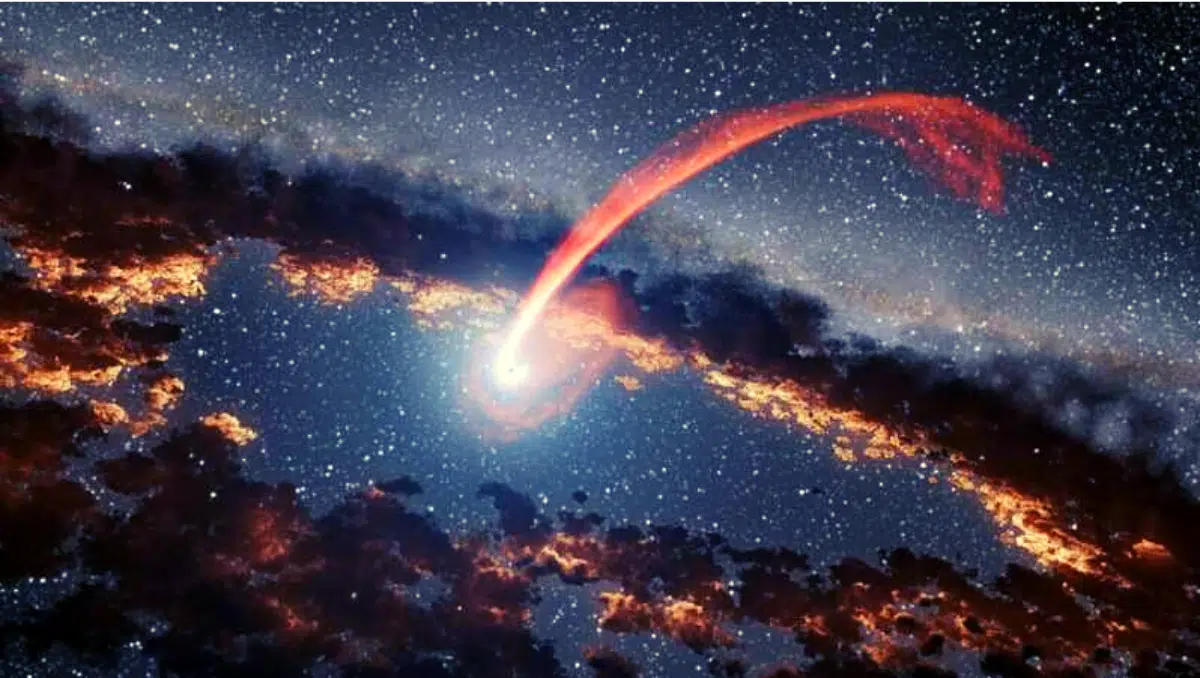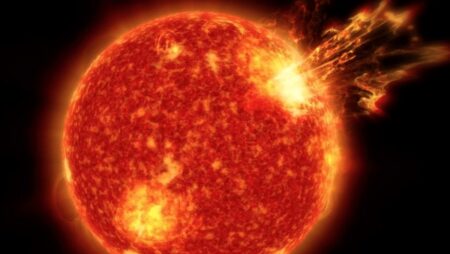Astrophysicists found a star shredding into the Supermassive Black Hole, forming a luminous surprise orbit around the Black Hole.

A Supermassive Black Hole tears a star orbiting it by its immense gravitational pull. This is found in a galaxy hundreds of millions of light-years away. As the star is put into pieces, the remnants form debris that shower into the black hole, forming a boiling radiant disc swirling around the black hole, called an accretion disc. This phenomenon is called Tidal Disruption Event (TDE)- where a star is shredded by a supermassive black hole and creates a scintillating accretion flare. It is predicted that TDEs occur once every 10000 to 100000 years in a galaxy.
With these luminosities in the galaxies for long periods, accretion events allow astrophysicists to study Supermassive Black Holes (SMBHs). Further, this allows an extended study into the central part of the galaxy-quiescent-dormant. TDEs give way to information about the event horizon or the point of no return of a black hole.
What is TDE?
TDEs occur usually “once and done” because of the extreme gravitational pull of the SMBH. Usually, SMBH destroys a star, meaning that SMBH vanishes the accretion flare into darkness. When the star has a high-density core, it can survive the gravitational pull of the SMBH, this allows the star to orbit around the black hole more than once. This is named a repeating partial Tidal Disruption Event (TDE).
Model Research:

A model on repeating partial TDE has been proposed by a team of physicists – lead author, Thomas Wevers, European Southern Observatory, and coauthors Eric Coughlin, assistant professor at Syracuse University, and Dheeraj R. “DJ” Pasham, a research scientist at MIT’s Kavli Institute for Astrophysics and Space Research. It was published in Astrophysical Journal Letters. The team’s study is the first material to develop and describe the repeating partial TDE. Their findings describe how a star is captured by SMBH, the taking of bits of the star, each time when it comes closer to the SMBH, and the delay between the juncture of material getting stripped and the juncture of it getting back to the black hole again.
A study was done on a TDE known as AT2018fyk. The star was captured by the SMBH through the process of “Hills Capture”. Hills capture is a process where a binary star system is disrupted by an SMBH, i.e, one of the stars in a binary star system is ripped by the SMBH and the other is thrown away from the center of the galaxy at a high speed. In studying AT2018fyk, one star was ripped by the black hole and the other was thrown away at a speed of 1000 km/s. This non-captured star is known as a hypervelocity star.
The outer layer of the captured star was repeatedly stripped by the SMBH, each time it got to the closest point with the black hole. This formed the bright accretion disc, which the team studied using X-Ray and Ultraviolet telescopes that observe light from distant galaxies.

According to Weavers, this study gave astronomers a striking opportunity to view the existence of supermassive black holes and the orbits of stars in the center of galaxies.
Weaver said, “ Until now the report of the findings from the close encounter of the star and the SMBH is that the star is destroyed. But contrary to all other TDEs, when we pointed the telescopes to the same location after several years, we found that the star had brightened again. This paved the way for us to put forward the theory of the re-brightening phase. It is that rather than destroying, a part of the star survived the initial pull of the black hole and returned to the same location to be ripped once more.”
Based on their model, the team predicted that the star would unexpectedly disappear around March 2024 and again brighten up to be stripped in 2025.













